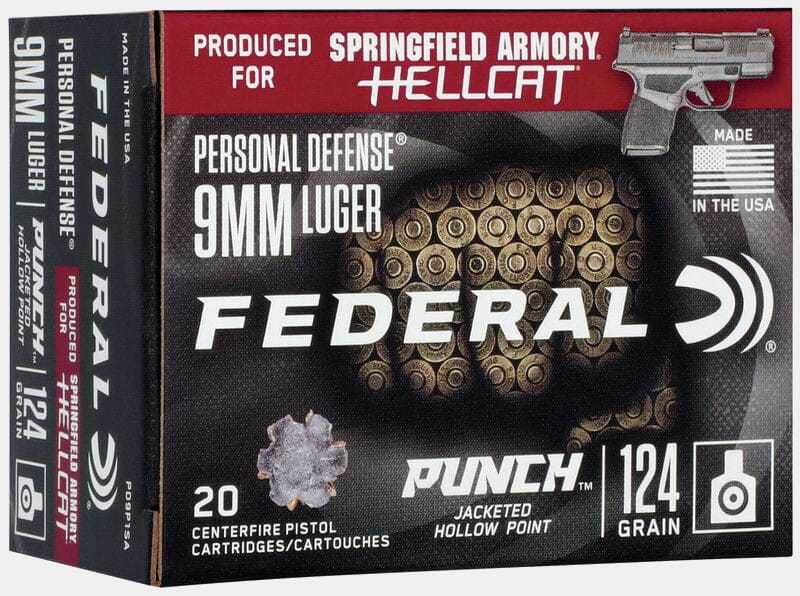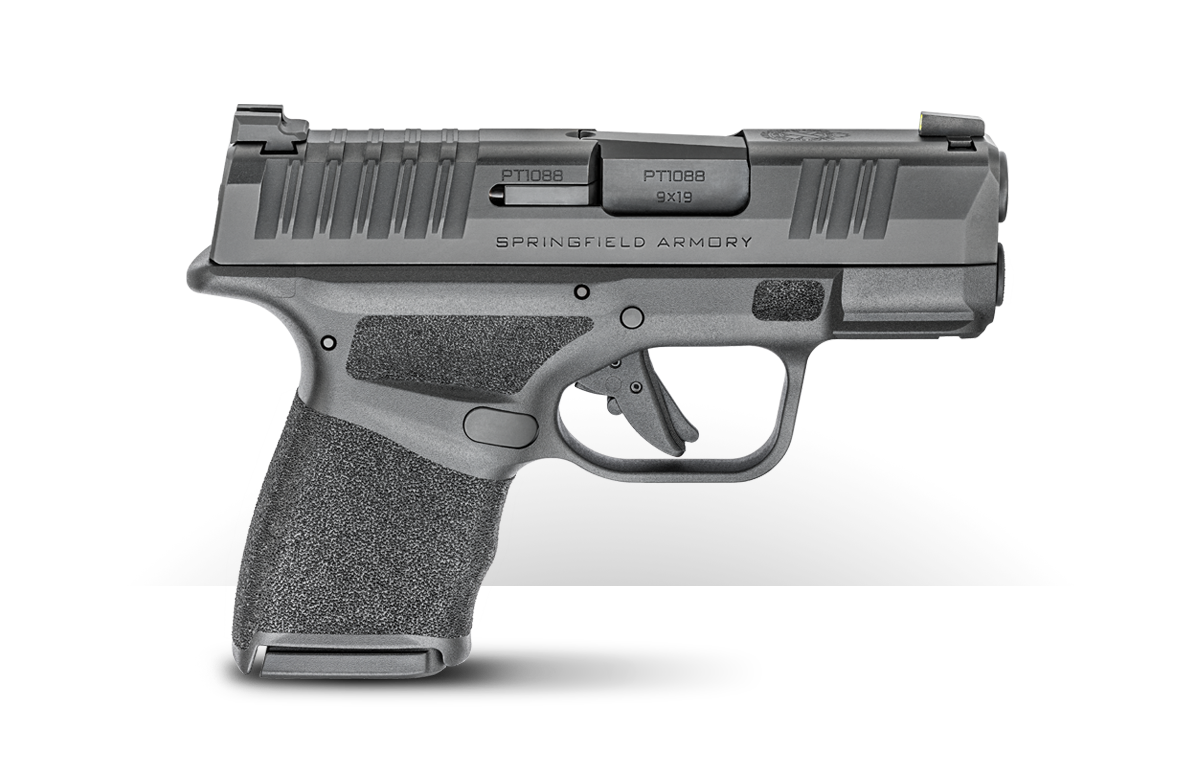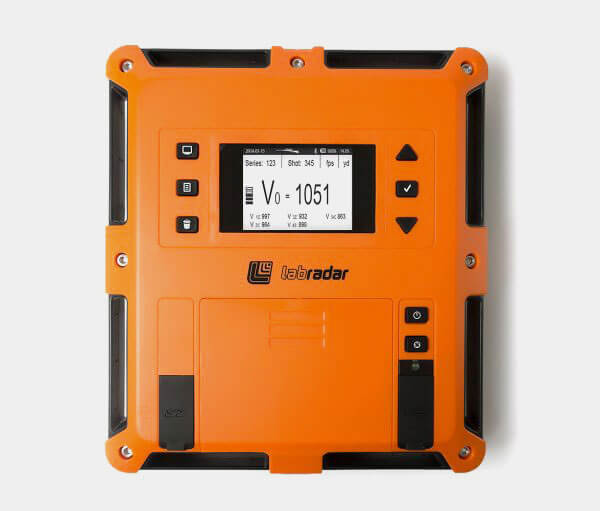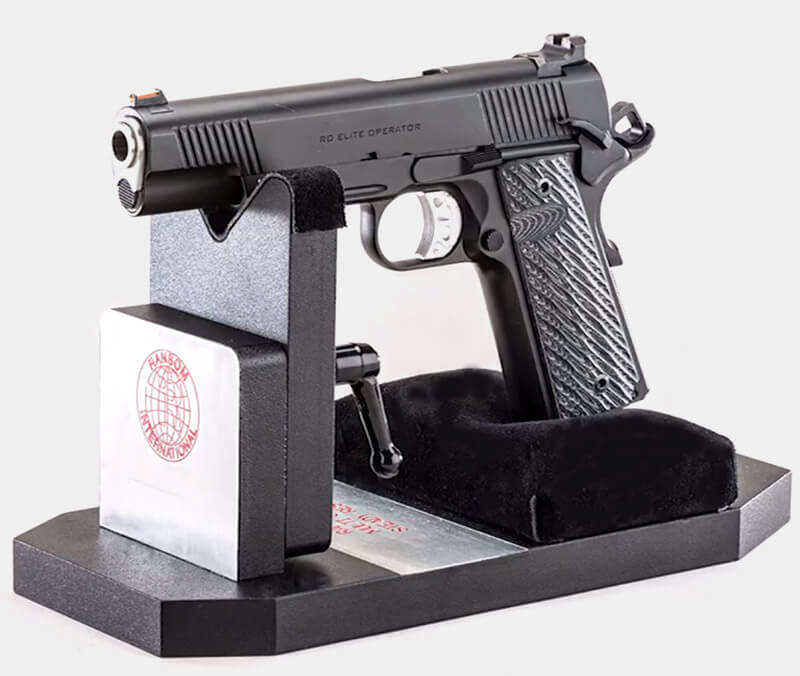In today’s review, Yamil Sued range tests the new Federal Punch 9mm ammunition developed for the Springfield Armory Hellcat. The ammunition was provided to the author by Federal without charge for the purposes of review.
There was a time when you had to make compromises with your EDC (every day carry) pistol. If it was easy to carry, it was difficult to shoot. Furthermore, its compact size ensured it would chamber a small, underpowered round barely acceptable for self-defense use. That was the situation, and — apart from carrying a full-size pistol — there was little that could be done about it.
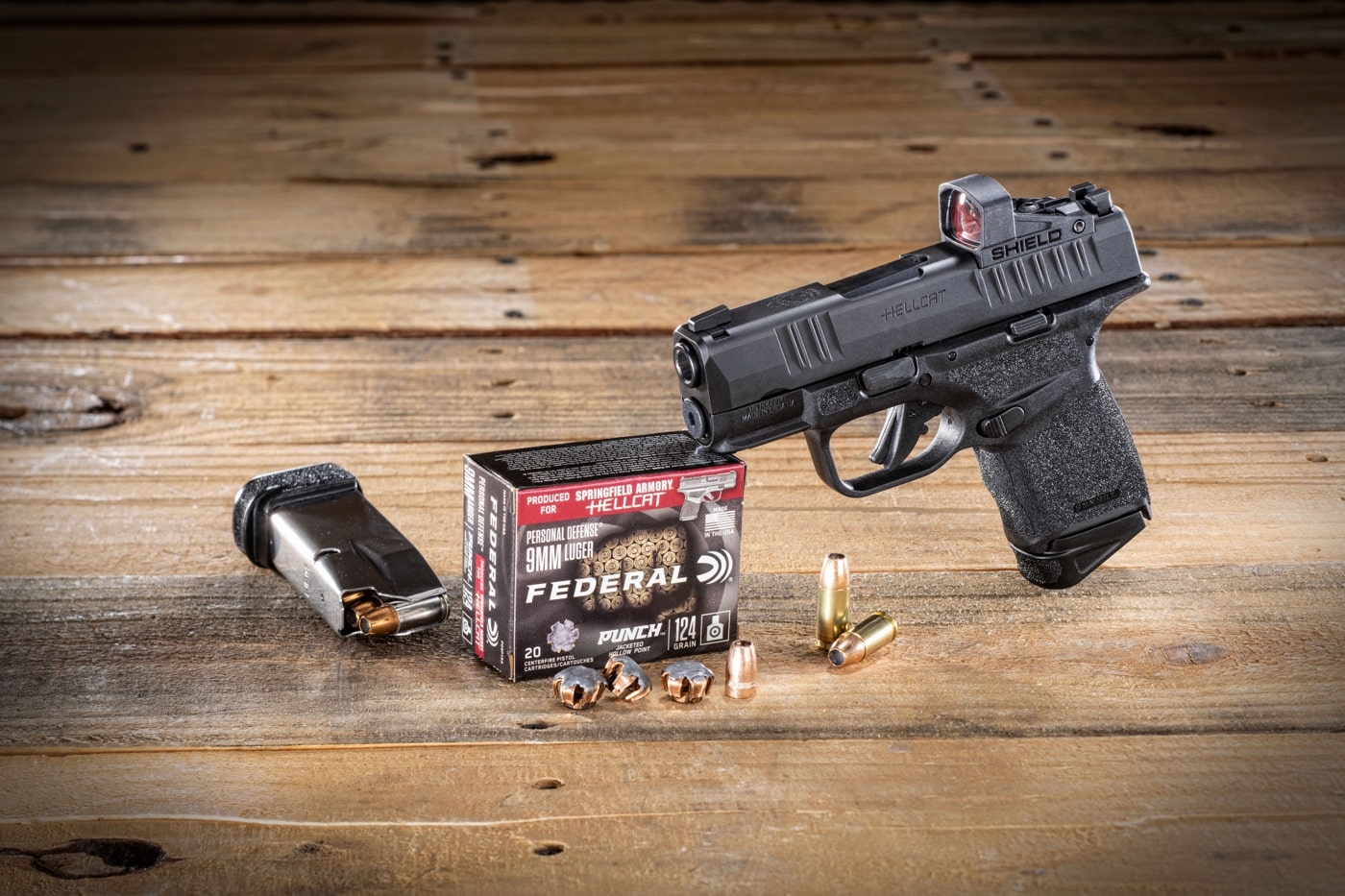
That all changed with the development of modern, micro-sized EDC pistols. Now, you could have a small pistol in a capable chambering. Springfield Armory took that concept one step beyond with the introduction of the Hellcat family of 9mm pistols.
[Be sure to catch our article What Is the Best Caliber for Self-Defense?]
Starting with the classic Hellcat with a 3” barrel and a capacity of 11, 13 and later 15 rounds, the line soon expanded to include the Hellcat RDP featuring a threaded barrel and a removeable compensator. Next would come the bigger brother, the Hellcat Pro, sporting a 3.7” barrel and a capacity of 15 and 17 rounds. A threaded barrel version of this model also became available.
Feeding the Cat
While the Hellcat offered shooters a compact pistol chambered in a very capable cartridge, there was still the hurdle of what ammo to feed it. In many cases, popular defensive ammunition is created for full-size service or “compact” pistols on the larger end of the size spectrum. It was rarely created specifically for micro-sized pistols.
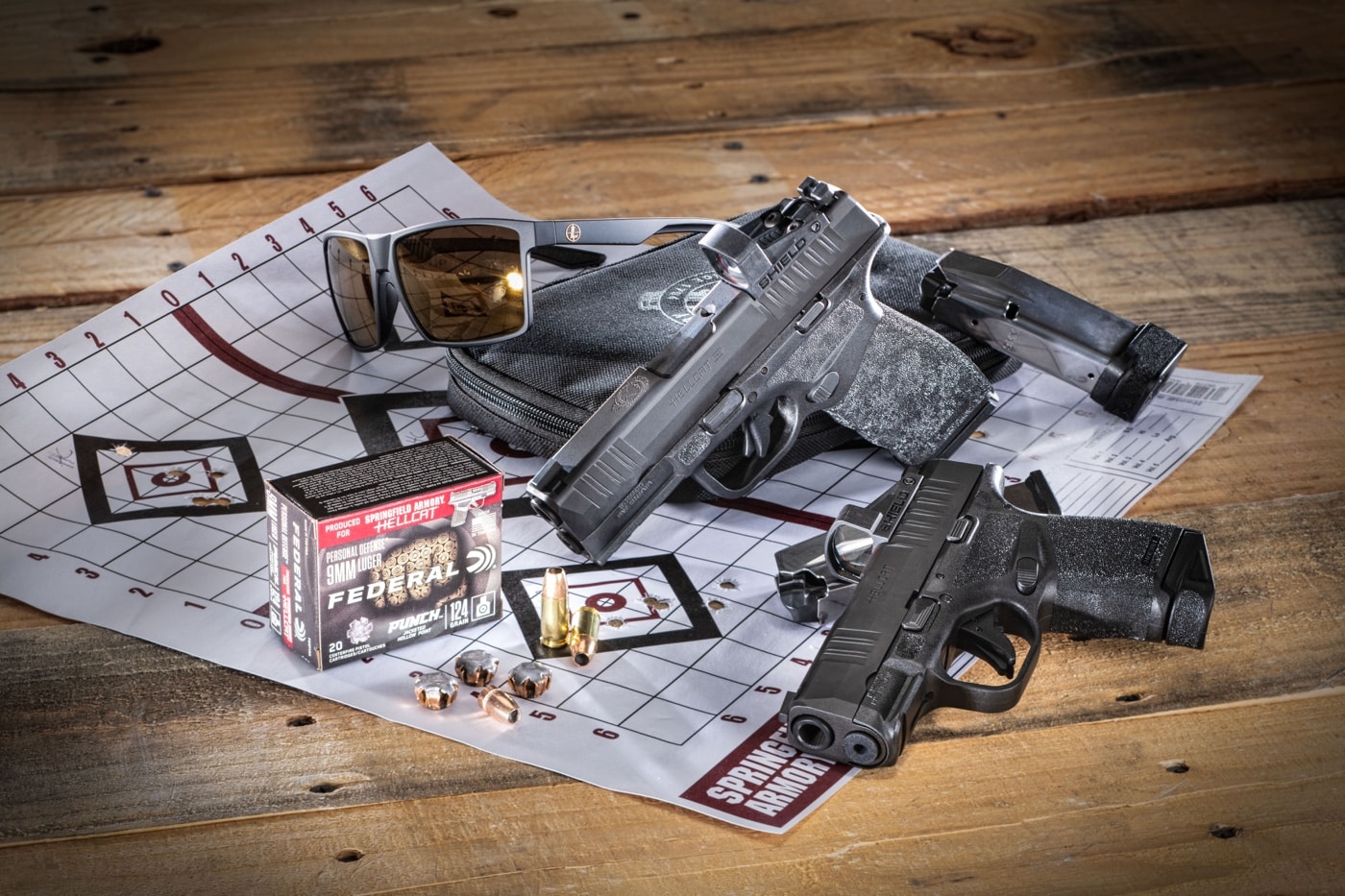
And then Federal came to the rescue. Building upon decades of experience making cutting-edge defensive ammunition, the company released the Punch series of handgun ammunition. The ammunition features bullets with a skived jacket and a soft lead core designed to produce exceptional expansion and penetration. What you get is a specialized round designed specifically for EDC use.
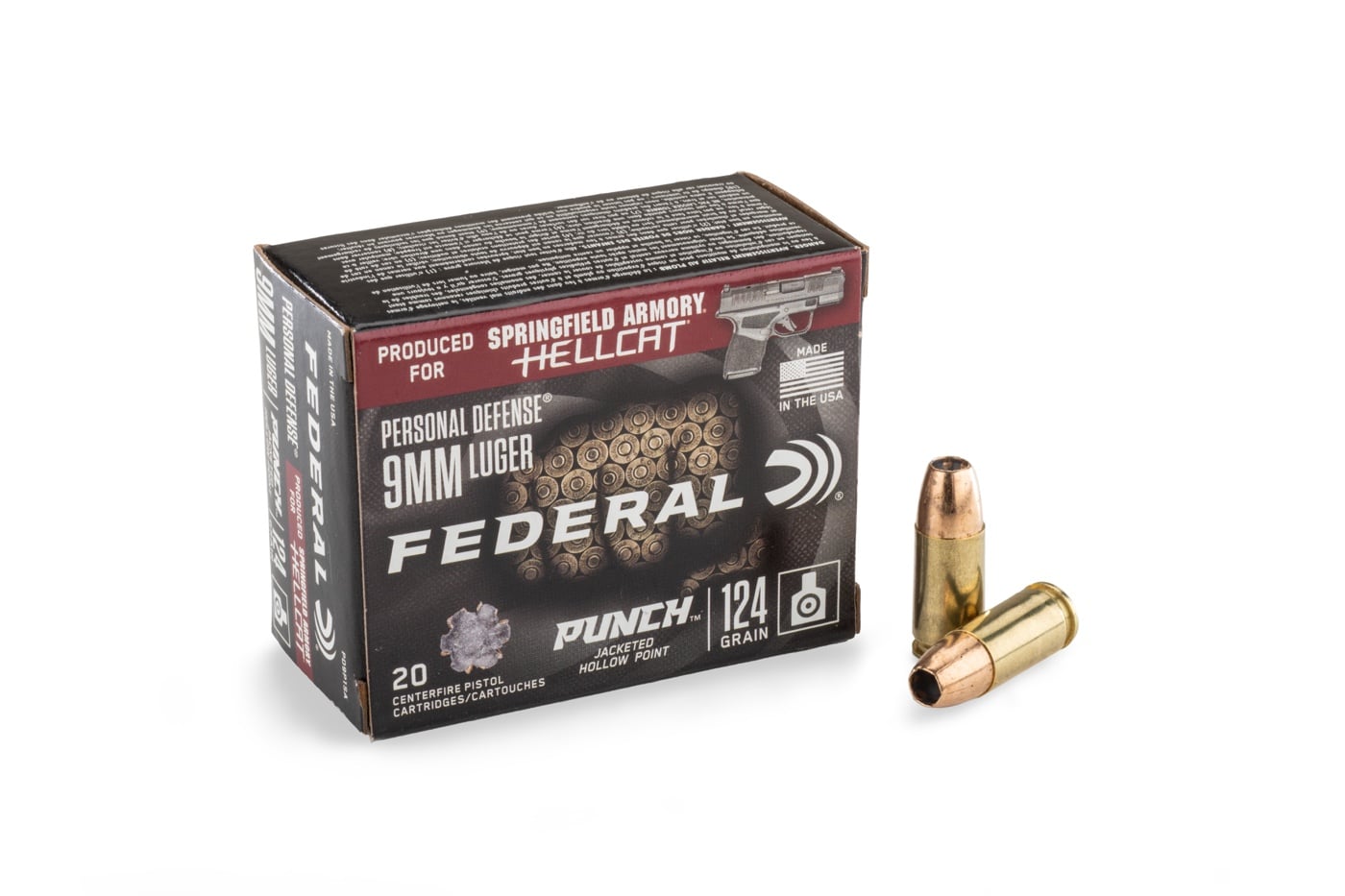
And now, Federal is offering the next level of specialization in the Punch line — the Punch Hellcat 124-gr. 9mm jacketed hollow point (JHP). Produced specifically for the Hellcat and Hellcat Pro family, this load is designed to maximize performance from these compact pistols.
[Don’t miss our article 9mm vs. .45 ACP — The Ultimate Caliber Conundrum.]
Hands-On
Needless to say, as a fan of the Hellcat I was excited to try out this new load. I have tested several makes of defensive ammunition in the past and I have seen data printed on ammunition boxes, and I have always wondered how ammunition manufacturers come up with this data. The ammunition I tested in the past it almost never comes close to the printed data on the box — in particular with smaller handguns.
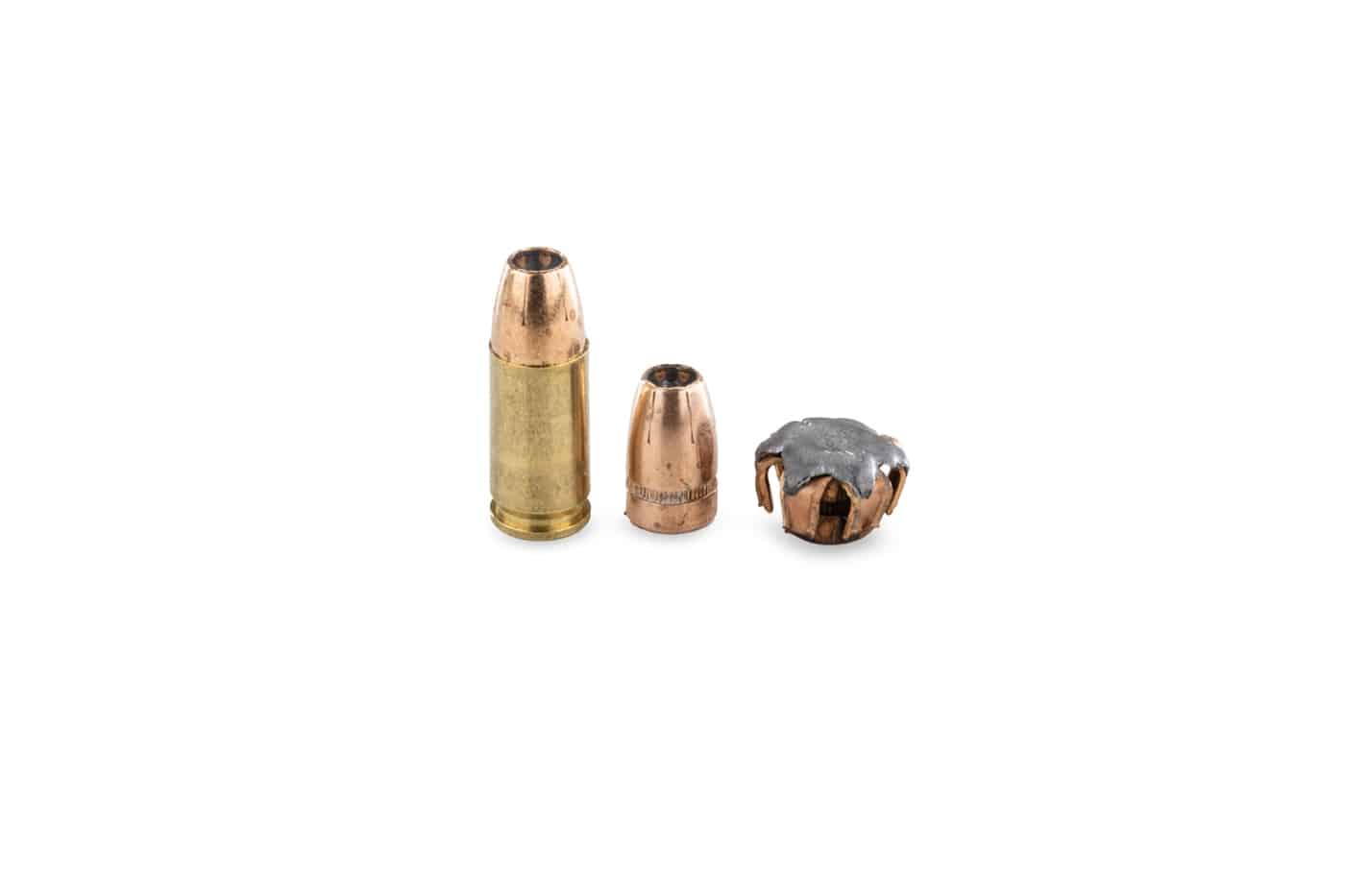
Federal printed very interesting data on the new Punch 9mm Hellcat ammunition boxes. It features two sets of data — one for the Hellcat and one for the Hellcat Pro. The box claims that the muzzle velocity of the Punch 9mm Hellcat ammunition fired through the Hellcat with its 3” barrel is 1,070 feet per second (fps) with 315 ft-lbs. of energy. The data for the Hellcat Pro with the 3.7” barrel is 1,120 fps with a 345 ft-lbs. of energy. I was curious if the printed data was correct, or overly optimistic. Well, there’s only one way to find out — to test it in both guns.
For the test, I measured velocity using the Labradar Chronograph. For the penetration test, I used Clear Ballistics Gel. The bare gel was placed 10 feet in front of the muzzle of the pistol. I shot for accuracy from the Ransom Multi-Cal Steady Rest. I tested accuracy at 10 yards. I did all our testing at C2 Tactical in Scottsdale, Arizona, and the range supplied us with a private bay with five lanes.
The Results
Our first test was with the chronograph. As per our previous tests, the Labradar worked perfectly. The Hellcat gave us an average muzzle velocity of 1,094 fps with 330 ft-lbs. of energy, giving me results with 24 fps higher velocity and 15 ft-lbs. higher muzzle energy than what was marked on the box.
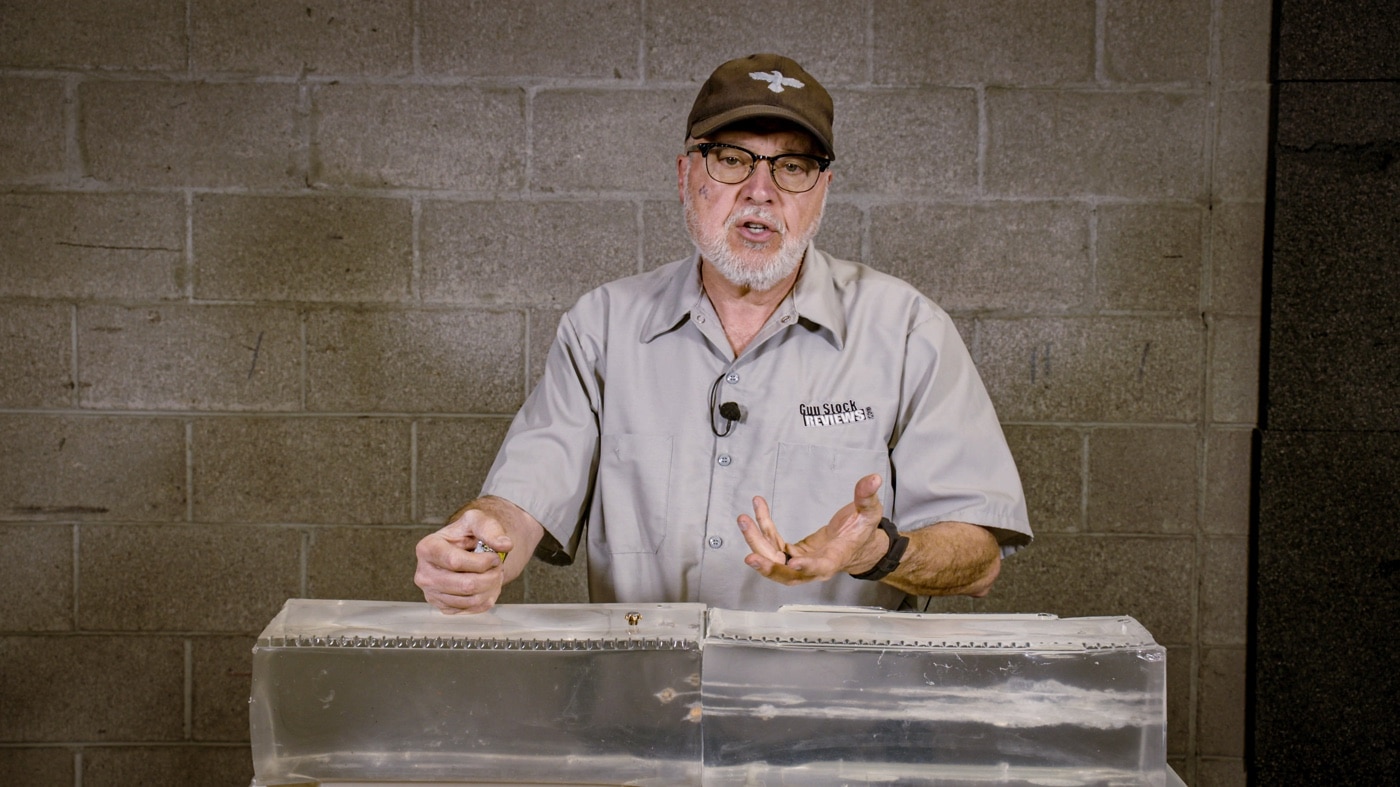
Moving on to the Hellcat Pro, I got an average muzzle velocity of 1,122 fps with 347 ft-lbs. of energy. With the Hellcat Pro, our velocity average was only two fps higher than the rated velocity and two ft-lbs. higher than the data provided on the box.
Our gel penetration test gave us a couple of interesting results. In our initial test, the Hellcat penetrated around 17.5” and the Hellcat Pro penetrated to 14.25”. The second Hellcat round fired, I got 17.25” of penetration in the gel. To make sure of the results I was getting, I fired a second round through the Hellcat Pro into the gel. This one penetrated just shy of 17.5”. I then fired one more round that went right behind our second Hellcat Pro round. When I inspected our gel, the two projectiles were touching each other.
| Ammunition — Handgun | Velocity | Group Size |
|---|---|---|
| Federal Punch 124-gr. JHP — Hellcat OSP | 1,094 fps | 0.75″ |
| Federal Punch 124-gr. JHP — Hellcat Pro | 1,122 fps | 0.85″ |
I then fired a couple more rounds, with both pistols’ rounds penetrating around 17-17.5”. I would have thought that due to the slightly longer barrel the penetration would have been greater on the Hellcat Pro, but that wasn’t the case. Even though the average velocity of the Hellcat Pro was about 28 fps faster than the Hellcat, it wasn’t enough difference to change the depth of the penetration in the gel.
[Consider also reading our 9mm vs. 10mm comparison here.]
All our projectiles expanded perfectly, even with the two bullets that impacted each other. The permanent wound channels on the gel show that the bullets started expanding after 1”-2” after impacting the gel. You can clearly see the spiral trajectory of the projectiles on the Clear Ballistics Gel.
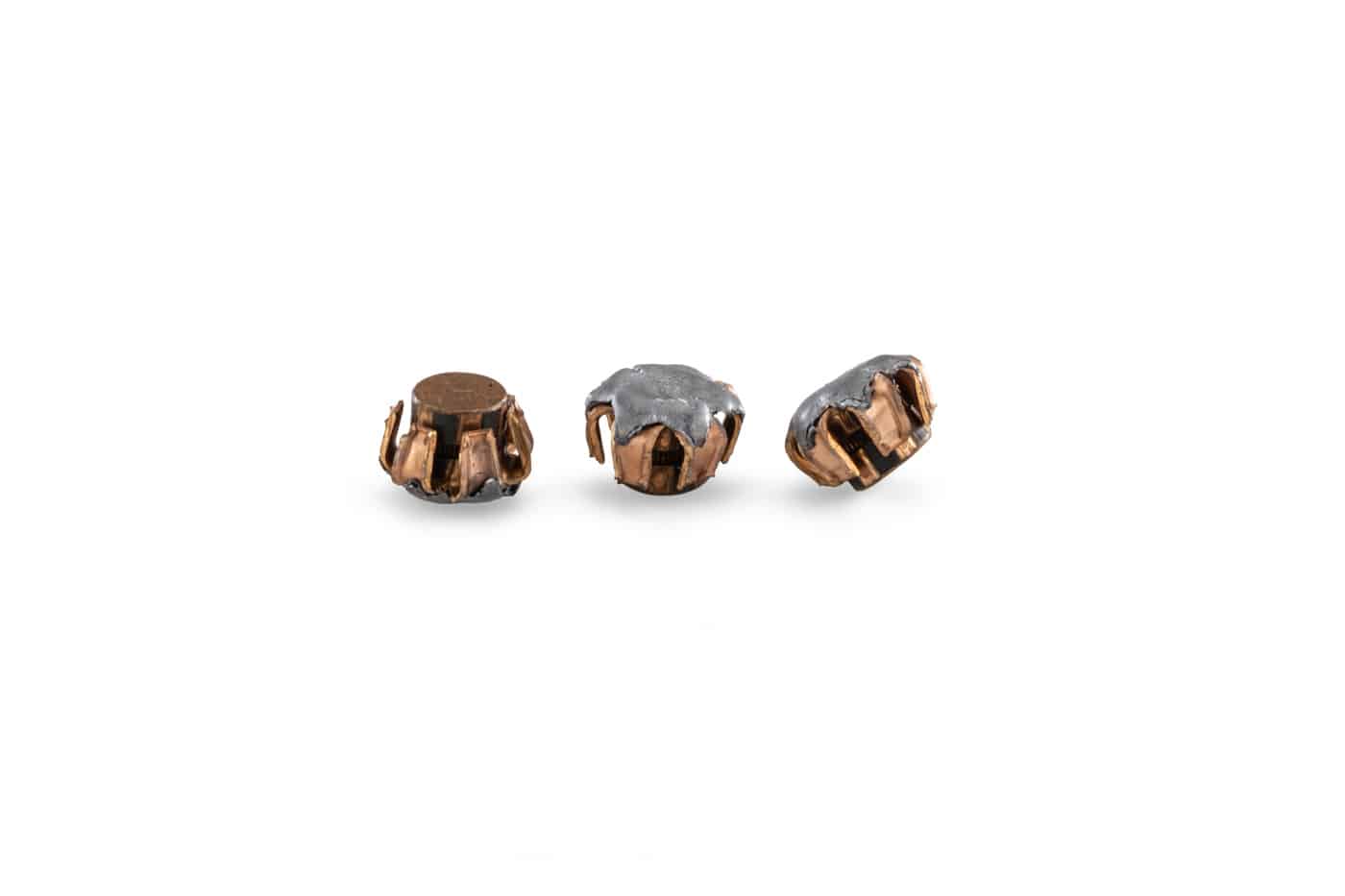
I then moved on to accuracy testing phase of the project. I first tested the Hellcat, and my results for a three-round group at 10 yards was .75”. This is quite good for such a compact pistol. The Hellcat Pro gave us a .85” three-round group at 10 yards. Again, quite good accuracy for such a compact pistol. Despite the clear power of these rounds, I found that they were quite manageable out of both pistols and I was able to get back on target very quickly.
Conclusion
As for my overall impressions, I was very pleased with the Federal Punch Hellcat ammo. My velocity test was impressive to say the least. This is honestly the first time I have tested ammo where I got better results than what was marked on the box. The gel testing and accuracy testing were impressive, and the pistol and ammo combination got me some very good results.
At the end of this test, I can say that I personally feel this is a terrific ammo choice for personal defense in a micro compact pistol. You get all the accuracy, reliability and performance that you could ever want in one package, and one designed with a particular carry gun — the Hellcat — in this case. If you ask me, this is an ammo and pistol combination you should seriously consider for your EDC needs.
Editor’s Note: Be sure to check out The Armory Life Forum, where you can comment about our daily articles, as well as just talk guns and gear. Click the “Go To Forum Thread” link below to jump in!
Join the Discussion
Featured in this video
Continue Reading
Did you enjoy this video?

 170
170




